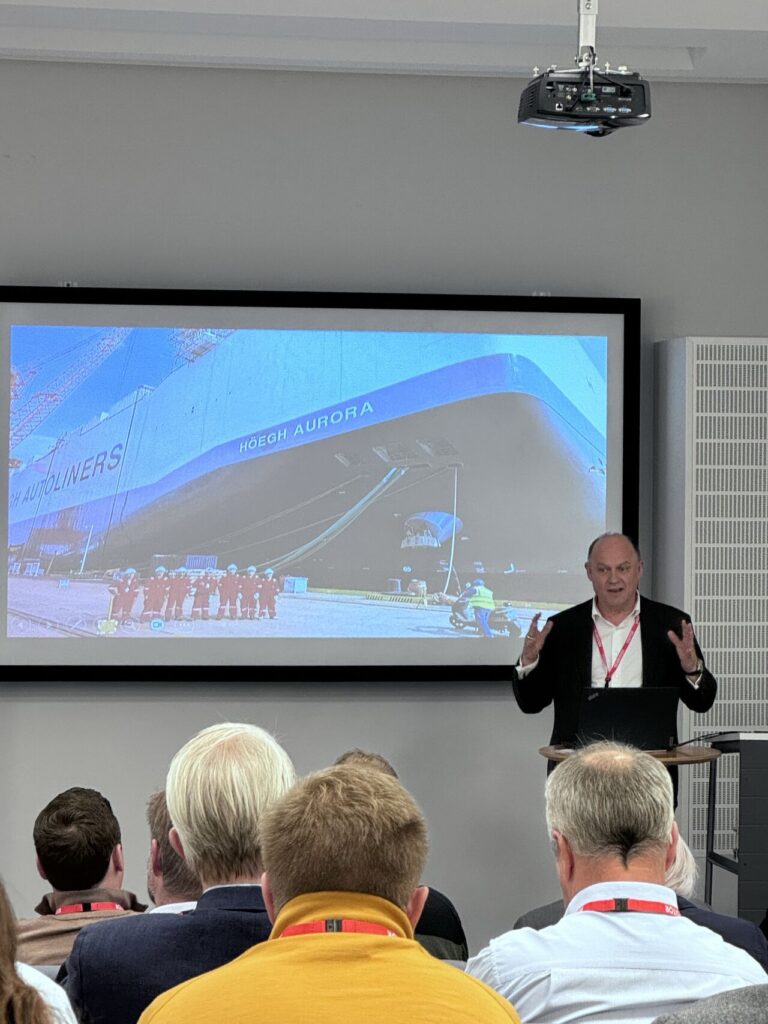Herøya, Norway – In September 2024, Yara’s ammonia plant in Herøya hosted an influential seminar focused on the emerging role of green ammonia as a sustainable fuel alternative for the maritime industry. Bringing together industry leaders, experts, and innovators, the seminar examined green ammonia’s potential, particularly in its application to decarbonizing shipping, while highlighting necessary safety protocols for production, bunkering, and use.
Green Ammonia: A Carbon-Neutral Solution for Maritime Decarbonization
Green ammonia is gaining traction as a sustainable fuel option with the ability to drive carbon neutrality in maritime operations. Industry stakeholders discussed green ammonia’s pivotal role in helping the shipping industry achieve decarbonization goals. Here are some key insights:
- Yara Clean Ammonia’s Vision: The seminar showcased “Yara Eyde,” Yara’s ammonia-powered container feeder vessel. Operating on a dual-fuel system of green ammonia and marine gas oil (MGO), the vessel represents a model for reduced greenhouse gas (GHG) emissions and compliance with anticipated fuel standards.
- Grieg Maritime Group’s Ambitious Developments: Grieg Maritime Group presented its groundbreaking plans for the world’s first green ammonia-fueled bunkering vessel, projected for completion by 2028. This pioneering project underscores the industry’s growing commitment to ammonia as a practical, low-carbon maritime fuel.
- Apollo Project’s Groundbreaking Dual-Fuel Engine: The Apollo Project aims to demonstrate the maritime industry’s first ammonia-powered dual-fuel engine, with an ambitious goal of reducing GHG emissions by 70%. This development could set new standards for ammonia-powered vessels in the sector.
Prioritizing Safety in Ammonia Handling
Given ammonia’s inherent risks, seminar presenters stressed the importance of advanced safety measures to support its use in maritime settings. Key safety discussions included:
- Ammonia Bunkering Procedures: Presenters shared comprehensive bunkering guidelines that incorporate risk assessments, gas dispersion analyses, and emergency response protocols. By reducing exposure to ammonia fumes, these protocols aim to protect personnel and ensure operational safety.
- Equipment and Operational Safety Innovations: Safety devices such as emergency release couplings, dry disconnect systems, and specialized ventilation solutions were introduced. These innovations are critical to safely transferring and storing ammonia in maritime environments.
- Apollo Project’s Safety Features: The Apollo Project also contributed significant safety advancements, including double-walled piping, advanced gas detection systems, and the Ammonia Release Mitigating Systems (ARMS) designed to mitigate risks in ammonia-fueled operations.
Overcoming Supply Chain and Infrastructure Challenges
Scaling up green ammonia production and creating efficient distribution channels remain pressing challenges for the industry:
- First-Ever Ammonia Bunkering Terminal: A major milestone discussed was the construction of the world’s first ammonia bunkering terminal in Florø, Norway. This terminal will serve as vital infrastructure for ammonia-based marine fuel, marking a significant step forward for widespread adoption.
- Ship Conversion vs. New Builds: Breeze Ship Design delved into the technical challenges of converting existing ships to ammonia-based fuel compared to constructing new vessels. Both approaches present unique difficulties, particularly concerning ammonia storage and safe handling systems on board.
Navigating Regulatory and Market Drivers
Regulatory compliance and emerging market conditions are also key motivators for green ammonia adoption in maritime settings:
- FuelEU Maritime Regulations: Presentations from Yara highlighted how ammonia-fueled vessels can offer a competitive advantage by significantly cutting carbon emissions and helping operators comply with the EU’s FuelEU Maritime regulations, thereby avoiding future penalties.
- International Maritime Organization (IMO) Standards: Industry experts addressed the importance of aligning ammonia-fueled ships with IMO standards, ensuring these vessels meet both emission reductions and safety regulations set for the global maritime industry.
Looking Forward: Green Ammonia’s Role in the Future of Shipping
The seminar underscored green ammonia’s promise as a zero-carbon marine fuel that aligns with global environmental goals. As the maritime industry faces growing pressure to decarbonize, green ammonia offers a compelling, scalable solution. However, challenges in production, distribution, safety, and regulatory compliance must be navigated collaboratively to unlock its full potential.
With advancements led by pioneers like Yara, Grieg Maritime, and the Apollo Project, the maritime sector is steadily moving toward a sustainable, ammonia-powered future.


